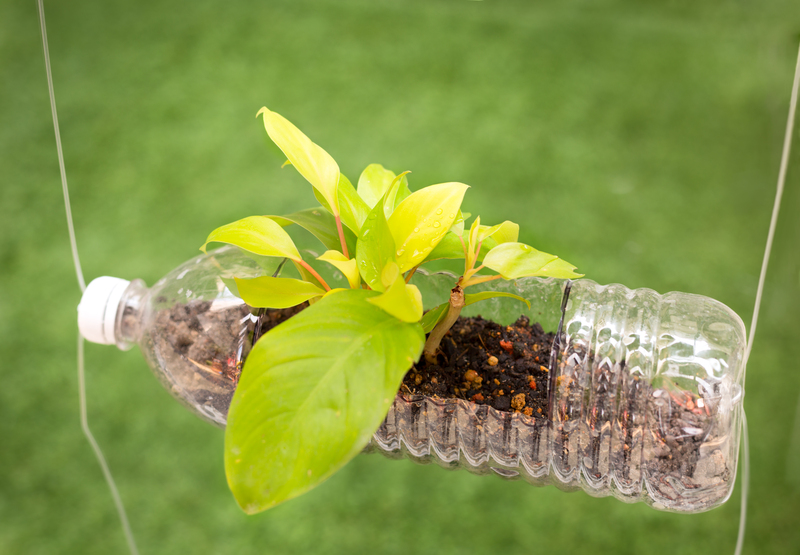The Right Way to Throw Away Used PPE: A Comprehensive Guide
In the wake of health crises like COVID-19, the use of personal protective equipment (PPE) has skyrocketed. Items such as masks, gloves, gowns, and face shields have become essential for safeguarding our health. But have you ever wondered about the right way to throw away used PPE? Proper PPE disposal ensures community safety, environmental protection, and responsible public health practices.
This detailed guide sheds light on the correct disposal methods for used PPE, the importance of proper waste management, and best practices for individuals and organizations alike. Let's explore all you need to know about disposing of used personal protective equipment safely and effectively.

What is PPE and Why Is Its Disposal Important?
Personal protective equipment (PPE) consists of specialized clothing or equipment worn to minimize exposure to hazards. Common examples include face masks, gloves, gowns, coveralls, and face shields. PPE is widely used by healthcare workers, essential service providers, and everyday citizens to prevent the spread of infectious diseases and dangerous substances.
However, throwing away used PPE haphazardly poses several risks:
- Cross-contamination: Used PPE might carry pathogens and harmful substances that can spread through improper handling.
- Environmental pollution: Many PPE items are made from single-use plastics and synthetic fibers that do not biodegrade.
- Public hazards: Discarded gloves or masks on streets or in parks endanger sanitation workers, wildlife, and the general public.
Clearly, knowing the right way to discard used PPE is vital for health, safety, and environmental sustainability.
Understanding Different Types of PPE Waste
1. Single-Use Masks
Surgical masks and disposable respirators (like N95s) are made of non-woven synthetic material and are intended for one-time use. Throwing these items away irresponsibly leads to significant waste management challenges.
2. Gloves
Latex, nitrile, and vinyl gloves protect hands from contaminants. When used, they often have traces of viruses, blood, or chemicals, making safe disposal of gloves a priority.
3. Gowns, Coveralls, and Face Shields
These are often single-use items in healthcare settings. Their size and materials mean they can contribute significantly to landfill problems if not properly managed.
4. Reusable PPE
Some PPE, like cloth masks or protective goggles, can be cleaned and reused. Understanding whether to clean, recycle, or throw away these items is critical.
The Correct Way to Dispose of Used PPE
Properly throwing away used PPE involves steps that keep you, others, and the environment safe. Here's a step-by-step guide on the best way to throw away PPE, whether you are at home, at work, or in a public space.
Step 1: Remove PPE Carefully
- Clean your hands before touching used PPE, if possible.
- Avoid touching the parts that have been exposed to contaminants.
- For gloves, peel them away from your hands by turning them inside out.
- For masks, remove by the ear loops or ties--never touch the front of the mask.
Step 2: Bag Used PPE Immediately
- Place all used PPE in a bag--preferably a lined, leak-proof trash bag.
- If you have multiple pieces of PPE, bag them together instead of scattering them in different bins.
- Do not throw used PPE into recycling bins--it is not recyclable through standard municipal programs.
Step 3: Seal and Dispose of the Bag
- Once full (but not overflowing), tie the bag securely to prevent exposure.
- Dispose of the bag in the general waste (landfill) bin, not recycling or compost bins.
- If you are disposing of PPE at a healthcare facility, follow the facility's protocol for hazardous or infectious waste.
Step 4: Wash Your Hands
- Immediately wash your hands with soap and water for at least 20 seconds, or use hand sanitizer with at least 60% alcohol.
Special Considerations for Medical or Infectious Waste
If the PPE has come into contact with potentially infectious materials (such as blood, body fluids, or known pathogens), it must be disposed of as medical or biohazardous waste. Such waste should:
- Be placed in clearly labeled biohazard bags or bins (commonly red or yellow).
- Be handled only by trained personnel or licensed waste management operators.
Never mix biohazardous waste with household trash or recycling.
How to Dispose of Used PPE at Home
In domestic settings, householders should adopt the following safe PPE disposal practices:
- Bag and tie used PPE: Always bag your used masks and gloves and tie the bag tightly.
- Double-bag if contaminated: If the PPE was used by a sick person or around infectious material, use a second bag for added safety.
- Keep separate from recyclables: Never place used PPE with your recyclable materials.
- Prevent scavenging: Ensure the bag is secure to prevent pets or wildlife from coming into contact with the contents.
For families caring for someone with a communicable illness, it is vital to follow additional local public health guidance for PPE disposal.
PPE Disposal in Public and Work Environments
Providing Disposal Bins
Organizations and public venues should install dedicated PPE disposal bins, especially in high-traffic areas such as:
- Entrances and exits of buildings
- Transit stations and airports
- Hospitals and clinics
- Shopping malls and retail locations
Encouraging Responsible Use
Display clear signage reminding users about the proper way to throw away PPE. Educational posters can reinforce the importance of correct disposal and the dangers of littering PPE in public spaces.
Protecting Sanitation Workers
- Provide staff with gloves, masks, and protective clothing.
- Train all relevant personnel on safe waste handling and disposal procedures for PPE.
Environmental Impacts of Improper PPE Disposal
Improperly discarded PPE, such as masks and gloves, is now one of the most visible forms of litter globally. As these items are composed mostly of plastics and synthetic fibers, they do not biodegrade and can persist in the environment for decades. Major problems include:
- Waterway pollution: PPE waste washed into rivers and oceans threatens marine life, which may ingest or become entangled in items.
- Microplastics: Masks and gloves break down into smaller particles, becoming microplastics that end up in food webs and ecosystems.
- Wildlife hazards: Animals may mistake PPE for food or nesting materials, with deadly results.
For these reasons, everyone must be aware of the correct way to discard used PPE to minimize environmental harm.
Recycling and Alternatives: Can PPE Be Recycled?
Most single-use PPE cannot be recycled in standard municipal recycling streams. Materials like polypropylene (used in masks) and nitrile (used in gloves) are problematic due to contamination and lack of processing facilities.
Specialized PPE Recycling Programs
A few innovative companies and programs have started to offer specialized recycling for PPE:
- TerraCycle: Offers zero waste boxes for PPE, which are collected and processed in dedicated facilities.
- MedWaste Management: Provides PPE disposal solutions for clinics and businesses.
These services are not available everywhere, so always check local options.
Choose Reusable PPE When Appropriate
- Use cloth masks that can be washed and reused if local regulations permit.
- Clean reusable PPE according to manufacturer instructions to ensure continued protection.
Reducing PPE Waste: Sustainable Practices
- Use PPE only when necessary: Avoid single-use PPE for general, low-risk environments.
- Adopt reusable alternatives: Opt for durable PPE where safe and appropriate.
- Educate yourself and others: Stay informed about best practices for PPE disposal.
Legal and Regulatory Guidelines for PPE Disposal
Regulations for PPE disposal vary by location and sector. In the United States, the CDC, OSHA, and EPA have issued guidance on PPE waste management in different contexts. Key takeaways include:
- Follow local public health orders for households, workplaces, and healthcare settings.
- Adhere to OSHA's bloodborne pathogens standard for PPE contaminated with blood or potentially infectious materials.
- Comply with EPA and local waste management authorities regarding landfill and hazardous waste procedures.
Check with your municipality's waste department or environmental agency for more information about PPE waste disposal regulations in your area.

Common Mistakes to Avoid When Throwing Away PPE
- Do not flush PPE: Never attempt to dispose of PPE (especially masks or gloves) down toilets--it causes plumbing and environmental issues.
- Do not mix with recyclables: PPE is not suitable for recycling and contaminates the entire bin.
- Never litter PPE in public: This endangers community health and the environment.
- Do not leave loose PPE outside bins: Loose items are likely to be picked up by the wind, animals, or children.
Conclusion: Take Responsibility for PPE Disposal
Proper disposal of used personal protective equipment is a civic duty that protects public health, sanitation workers, and our environment. Whether you are an individual, business owner, or community leader, understanding the right way to throw away used PPE can help reduce risk and minimize your environmental footprint.
- Always handle and bag used PPE with care.
- Use clearly labeled trash bins for PPE disposal.
- Encourage others to follow correct PPE waste practices.
By making informed choices and spreading awareness about the correct way to dispose of PPE, we can keep our communities safe and our planet clean. If in doubt, consult your local waste management authority for the latest guidelines on used PPE disposal.